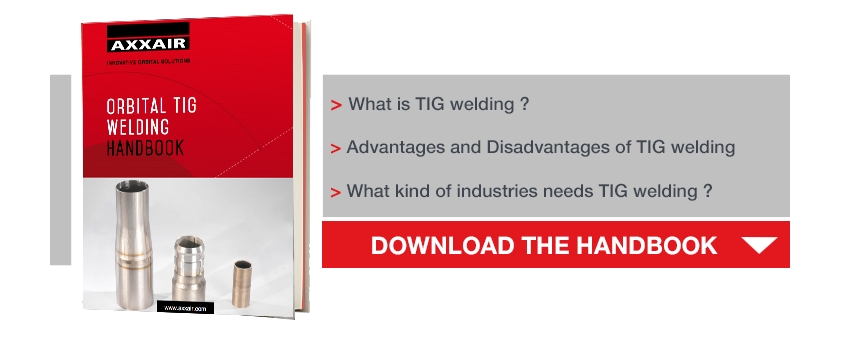The world of welding has known revolutionary developments in the last decades, in the field of manual and automated orbital welding. A large number of welding procedures exist today, perfectly adapted to any kind of metal or application. What kind of welding for which application?
Automated welding is the guarantee for high quality
Many factors will have a direct influence on the quality of the manual welds, such as the arc height, the welding speed, the intensity and the pulse frequency, the basic material, the thermal conductivity and so on.
In the case of manual welding a perfect quality can only be achieved if the welder is experienced and if he chooses the right combination of welding parameters. You also will have to consider the security of the welders, as certain positions will be difficult to handle (vertical downward welding, overhead welding, welding in confined areas …) which can lead to mistakes and faults with dangerous consequences (leakages, breaks…)
In industrial workshops that realize serial production of tubings, the welds are generally done by automated machines. The welding procedure is controlled by an operator who ensures a regular repeatable and identical weld at any point thanks to a predefined program.
The automated welding procedures are precise and able to comply automatically to new constellations only by changing the electrical or thermal instructions. They are also able to take into account any welding variations or differences in the geometric form of the workpieces that have to be assembled.
Human presence is however needed in order to control the whole process and to make sure that the operations are executed in the right way.
Automation and orbital welding (welding procedure with an arc turning around the tube in a continuous way) allow welding even in positions that are quite difficult for the welder. They can operate in restricted or hazardous areas whilst keeping the same regularity in welding and assuring perfect protection for the welder. Orbital welding is recommended for welding tubes and pipes.
The variant of semi-automated welding: the solution for small series?
If you wish to choose between 100% manual welding or automated welding, the mechanical welding procedure can be the right solution as the machine will take over all the physical work and the welder will be in charge of the surveillance and the total control of the process.
The welding parameters will be controlled by the equipment after having been programmed by the welder before the operation. In practice some constraints will lead the welder to proceed to modifications and adjustments even during the welding procedure.
The aim of automation is to achieve a better productivity, and a consistent and optimized quality by reducing defects. Automation also offers maximum profitability by reducing the scrap rate and a much lower number of controls and their cost. Automation is the best solution for production needing several small welds in different positions or angle welding.
The experience and the know-how of the welder: an added value for complex welds
The welder is an operator whose role is to adjust the equipment and to control the welding operation.
In the case of production of high added value workpieces as used for aerospace, nuclear or oil and gas applications the welds are made by robots programed by experienced welders. In the case of small quantities or customized parts, the semi-automatic weld combined with manual welding is preferred.
Read our customers' feedbacks!
Considering the development of automated solutions the welder has to adapt himself and he will be more protected in his daily work when using orbital welding equipment. His presence is still necessary in order to obtain a perfect result. The use of the machine will not make sense without the know-how of the welders for the upstream work, their professional use of the equipment and the surveillance of the industrial production chains.
From manual welding up to the automation and the orbital welding, progress has lead to a revolution. Numerous welding processes are available today, able to weld any material in any situation.
Are you looking for more details on orbital TIG welding? Download our free ebook on TIG welding!




